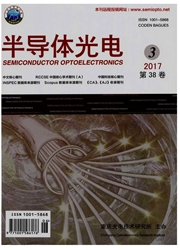

 中文摘要:
中文摘要:
有机紫外光探测器应用前景广泛,与无机紫外光探测器相比具有制作简单、成本低、质量轻便于携带、可制成大面积器件或者柔性衬底等优点。有机小分子紫外光探测器活性界面结构主要分为平面异质节、体异质节和混合层平面异质节。按照不同异质节结构,综述了近年来有机小分子紫外光探测器的研究进展,以及不同结构的优缺点,并根据相关文献报道,对如何提高器件性能提出了相应的改进措施。
 英文摘要:
英文摘要:
Compared to conventional inorganic ultraviolet photodetectors,organic ultraviolet photodetectors(OUV-PDs)have been widely used due to their advantages of low cost,light weight,flexibility and largearea device manufacturing.The structures of OUV-PDs mainly consist of planar heterojunctions,bulk heterojunctions and mixed-planar heterojunctions.The recent progress of different heterojunction structures based on organic small molecule and the advantages and disadvantages of different structures in OUV-PDs were reviewed.Some corresponding methods were proposed to improve the performance of OUV-PDs based on correlative literature.
 同期刊论文项目
同期刊论文项目
 同项目期刊论文
同项目期刊论文
 期刊信息
期刊信息
